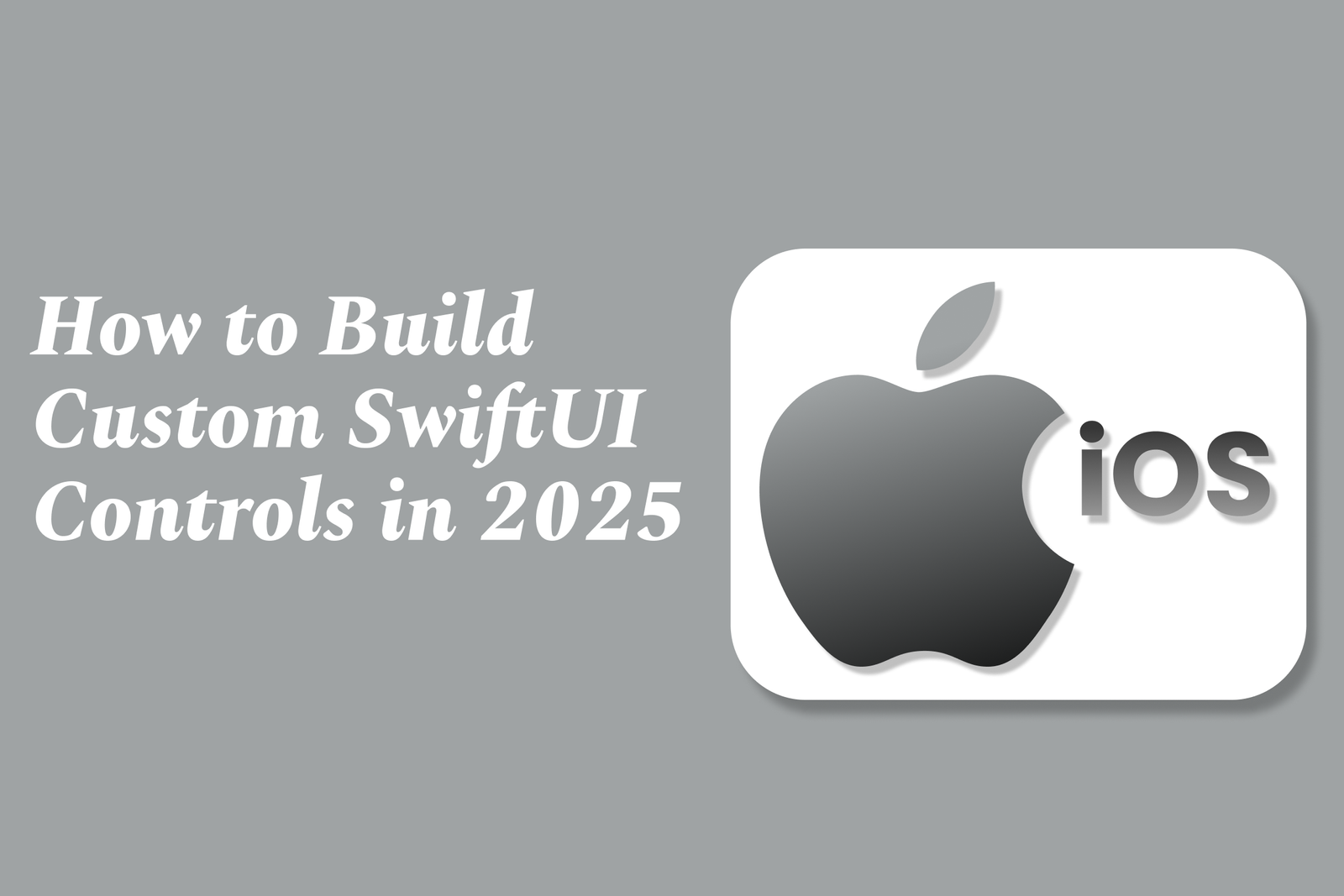How to build custom swiftui controls in 2025
Building custom SwiftUI controls in 2025 leverages the latest SwiftUI APIs, enhanced animations like matchedGeometryEffect, and modern design trends such as Liquid Glass. These tools enable developers to create dynamic, accessible, and visually engaging UI components with seamless cross-platform support.
How to Build Custom SwiftUI Controls in 2025
1 ) Introduction to Building Custom Controls with SwiftUI
In 2025, SwiftUI continues to evolve, offering powerful tools for developers to create custom controls tailored to their app's design and user experience needs. SwiftUI’s declarative syntax and built in animation capabilities make it an excellent choice for building highly interactive and accessible UI elements.
2 ) Embracing the Latest SwiftUI Features
New APIs in SwiftUI allow deeper customization and integration of controls across platforms including iOS 26 and visionOS. These include improved support for dynamic type, accentuated rendering modes, and seamless RealityKit integration for immersive 3D apps.
3 ) Design Philosophy: Layered Interfaces and Liquid Glass
A new design language called “Liquid Glass” shapes iOS 26 interface design by providing translucent glass like layers that overlay app UIs. This layered design should be applied selectively, usually on elements like toolbars, tab bars, and floating action buttons that sit atop the main content to maintain clarity and depth.
4 ) When and How to Use Liquid Glass Effects
Developers are encouraged to apply Liquid Glass effects to overlay components, avoiding use on main content areas to prevent UI clutter or confusing transparency. SwiftUI provides view modifiers that help easily implement these glass effects, enhancing interface appeal and depth perception.
5 ) Building Custom Controls: Case Study of a Segmented Control Using Matched Geometry Effect
A practical example of a custom segmented control demonstrates how to use SwiftUI’s `matchedGeometryEffect()` to animate a capsule shaped selection highlight. This method smoothly transitions the highlight between options while maintaining a clean, accessible, and visually appealing control.
The segmented control uses an `HStack` of buttons representing options.
A background capsule highlights the selected option, dynamically resizing and repositioning using `matchedGeometryEffect`.
The animation smoothly matches the geometry of the selected button, providing clear visual feedback.
6 ) Accessibility and Dynamic Type Support in Custom Controls
Supporting dynamic type and accessibility is crucial. SwiftUI's flexibility allows custom controls to respond fluidly to changes in text size and user preferences, ensuring legibility and usability in all contexts.
7 ) Styling and Theming Considerations
Custom controls benefit from consistent styling aligned with the app’s design language. For example, using a rounded, friendly design motif across controls creates a cohesive user experience. Color choices must also account for accessibility concerns, such as colorblind safe themes.
8 ) Summary: The Future of Custom Controls in SwiftUI
SwiftUI in 2025 empowers developers to build sophisticated, engaging custom controls with fluid animations, accessibility compliance, and modern styling paradigms. Leveraging new APIs, matched geometry animations, and design principles like Liquid Glass will help apps stand out in both form and function.
This summary captures the essence of building custom controls in SwiftUI in 2025, highlighting new design trends, practical implementation techniques, and accessibility considerations crucial for modern app development.
https://justacademy.in/news-detail/best-companies-hiring-flutter-devs
https://justacademy.in/news-detail/government-apps-built-using-flutter
https://justacademy.in/news-detail/react-native-and-graphql:-a-match-made-in-heaven
https://justacademy.in/news-detail/google-android-ecosystem-partnerships
https://justacademy.in/news-detail/the-surprising-benefits-of-react-native-in-education-apps
Related Posts
Java supports GDPR and data privacy by enabling secure data handling through encryption, controlled access, and precise data management. It allows developers to minimize PII exposure, ensure data confidentiality, and design workflows that comply with data protection regulations effectively.
Java code quality tools have evolved to include advanced static analysis, integrated security checks, and AI-powered code reviews. These updates help developers detect bugs, enforce coding standards, and enhance security, streamlining the development process and improving overall code reliability.
Java remains a cornerstone in big tech companies, evolving with modern features like records, pattern matching, and virtual threads. Its robust ecosystem, enhanced performance, and growing AI integrations keep it vital for both legacy systems and innovative new projects.
Java and CI/CD pipeline optimizations streamline Java application development by automating builds, tests, and deployments. They improve efficiency through parallelization, caching, and secure secrets management, enabling faster feedback loops and more reliable, scalable software delivery.
Java supports modern cryptography standards through its flexible Java Cryptography Architecture (JCA), enabling integration of advanced algorithms like AES, EdDSA, and post-quantum tools. Libraries like Bouncy Castle offer FIPS-certified, hardware-accelerated implementations for secure development.
Java 23 enhances record patterns by enabling concise, direct destructuring of record components within pattern matching, simplifying type checks and data extraction. This improvement boosts code readability and expressiveness by reducing boilerplate in handling immutable data classes.
Java remains a top choice for mobile app backends, powering scalable, secure, and high-performance server-side solutions. Latest trends include cloud-native microservices, reactive programming, and enhanced JVM optimizations, enabling efficient, flexible, and robust mobile backend development.
Java SE 24 and LTS Java SE 21 offer enhanced features and performance, while Apache Spark 4.0.0 introduces Scala 2.13 support and advanced ML and SQL capabilities. Together, they empower developers to build scalable, high-performance data applications with modern tools.
JUnit 5 modernizes Java testing with a modular architecture, improved assertions, and seamless Java 8+ support. Beyond JUnit, tools like Mockito and AssertJ enhance mocking and assertions, creating a powerful, flexible ecosystem for writing clean, efficient Java unit tests.
Java plays a pivotal role in cloud automation tools by providing a robust, platform-independent language used to build scalable automation frameworks like Jenkins and Selenium, enabling efficient CI/CD pipelines, testing, and orchestration across diverse cloud environments.










